History/ES 247 Reading Guide
Rural life in Nineteenth-Century Maine
- David C. Smith, et al., “Climate Fluctuations and Agricultural Change in Southern and Central New England, 1765-1880,” Maine Historical Society Quarterly 21:4 (Spring 1982): 179-200. (e-reserve)
- Marcie Cohen, “The Journals of Joshua Whitman, Turner, Maine, 1809-1846,” The Farm (Dublin Seminar for New England Folklife,1988), 49-59. (e-reserve)
- Thomas Hubka, “Farm Family Mutuality: The Mid-Nineteenth-Century Maine Farm Neighborhood,” The Farm (Dublin Seminar for New England Folklife, 1988), 13-23. (e-reserve)
- Theresa Kerchner, “The Improved Acre: The Besse Farm as a Case Study in Land-clearing, Abandonment, and Reforestation,” Maine History 44.1, (2008), 77-102. (e-reserve)
Further reading:
- Film, Sins of our Mothers: the Story of Emeline. 58 minutes (1988).
- William R. Baron, “Eighteenth-Century New England Climate Variation and Its Suggested Impact on Society,” Maine Historical Society Quarterly 21:4 (Spring 1982): 201-219.
- Jessamy Luthin, “From Wanted to Weeds: A Natural History of Some of New England’s Introduced Plants,” Maine History 49.2 (2015), 133-149.
- Cody P. Miller, “‘The Farmer’s Family Must Find Compensation in Something Less Tangible, Less Material’: Culture and Agriculture in Maine and New England, 1870-1905,” Maine History
49.2, 151-175.
Further reading on research design and methodology:
- Robert A. Gross, “Culture and Cultivation: Agriculture and Society in Thoreau’s Concord,” Journal of American History 69:1 (1982): 42-61.
- Sarah F. McMahon, “All Things in their Proper Season: Seasonal Rhythms of Diet in Nineteenth-Century New England,” Agricultural History 63:2 (1989): 130-151.
- Elspeth Brown, “Gender and Identity in Rural Maine: Women and the Maine Farmer, 1870-1875,” Maine Historical Society Quarterly 33:2 (1993): 120-135.
- Mark R. Anderson, “Images of Nineteenth-Century Maine Farming in the Prose and Poetry of R.P.T Coffin and C.A. Stephens,” Agricultural History 63 (1989): 120-129.
Questions:
Consider the context that we have been building: pioneering on the northeastern frontier in the early republic; political struggles between settlers and proprietors; radical religious enthusiasms; and Timothy Dwight’s predictions and warnings about Maine in his “general observations” concerning this “country” (156-166).
- How did agricultural settlements on the coast and inland continue to evolve in the nineteenth century?
- Into what periods do Smith (and Baron in the further reading) break down the long-term climate fluctuations in Maine? How did these periods coincide with the migrations into Maine, and with the political and religious developments that we have discussed? How did climate fluctuations shape the opportunities for agriculture in Maine? How do their interpretations of a climate-stress situation fit with the evidence that we have considered thus far?
- Use that climatological framework to think about the experience of farming on the “edge’ of the agricultural zone in the years when settlement extended northward and westward toward those limits: what changed, and what stayed the same?
- What kinds of “improvement” and “development” did Maine farming families and farming communities achieve during the nineteenth century? What strategies did they follow—individually, in local neighborhood and community networks, and regionally—to support themselves?
- How did the participants view their endeavors?
- Were these experiences and strategies peculiar to Maine or did they represent New England regional strategies more broadly?
Postcards:
Farming:
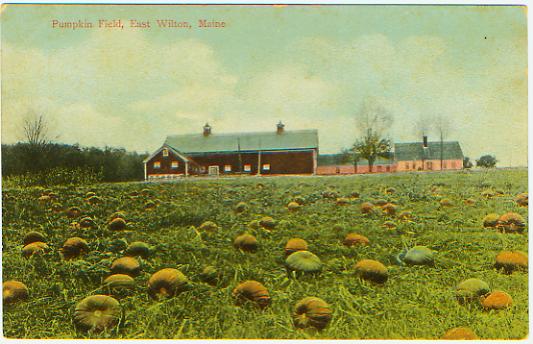
Pumpkin Field, East Wilton, Maine (c.1910)
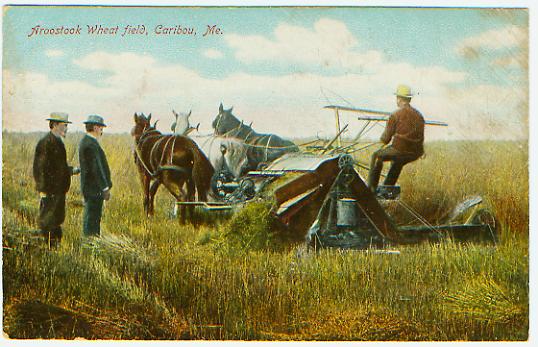
Aroostook Wheat field, Caribou, Me. (c.1905)
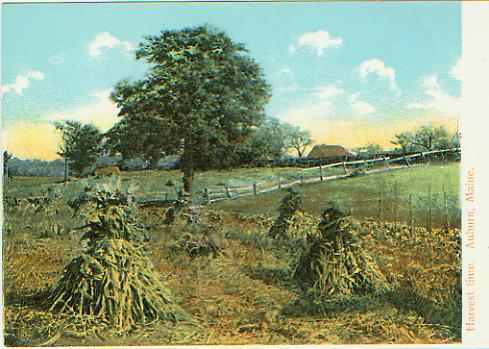
Harvest time. Auburn, Maine. (c. 1910)
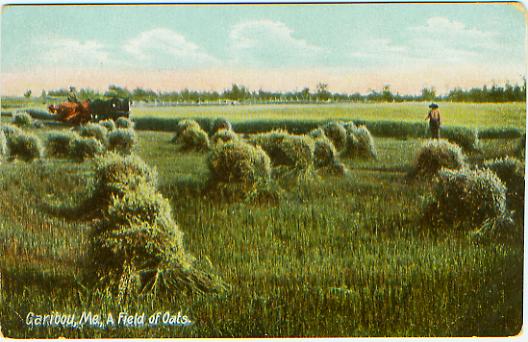
Caribou, Me., A Field of Oats. (c. 1908)
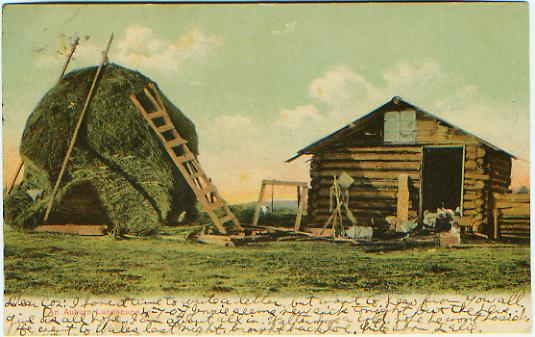
An Auburn Landscape (c. 1907)
- Dear Coz: I havent time to write a letter, but want to hear from you all. Jennies seems very sick tonight but the Drs give us all hope. I am about all in. Walter has a cold. hope he wont be sick. He went to Wales last night. brought back Joe. Write soon. Lalie. 4-7-07
Marketing farm products:
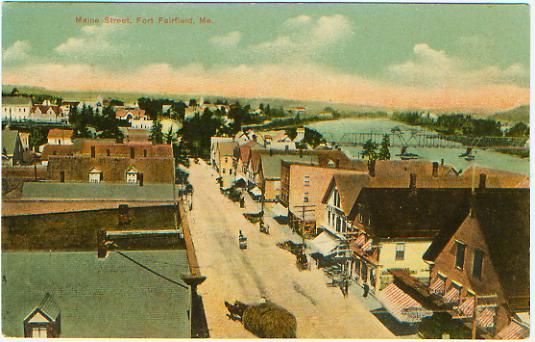
Maine Street, Fort Fairfield, Me. (c.1907)
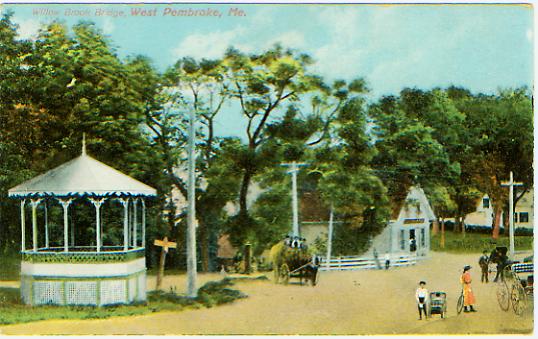
Willow Brook Bridge, West Pembroke, Me. (1910)
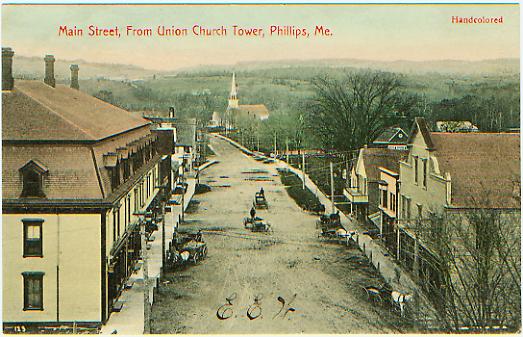
Main Street, From Union Church Tower, Phillips, Me. (c.1907)
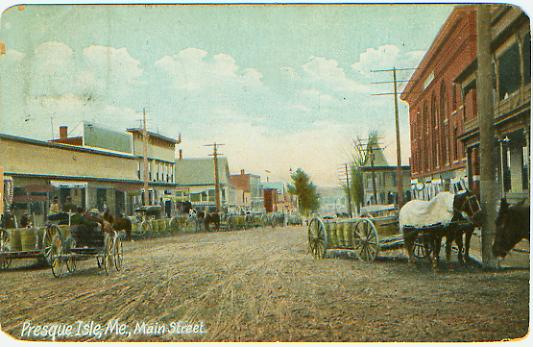
Presque Isle, Me., Main Street (c.1908)
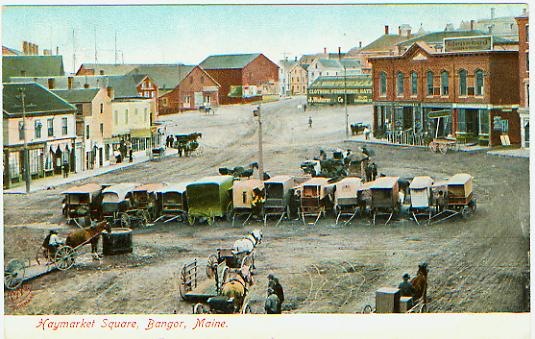
Haymarket Square, Bangor, Maine. (c.1905)
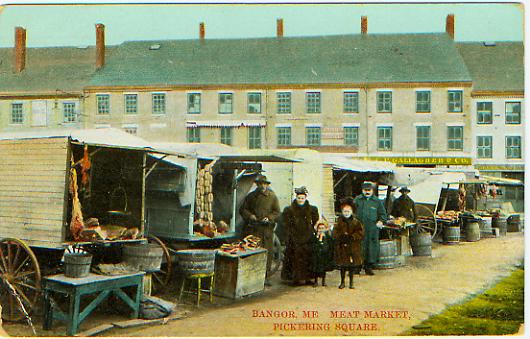
Bangor, Me. Meat Market, Pickering Square (c.1910)
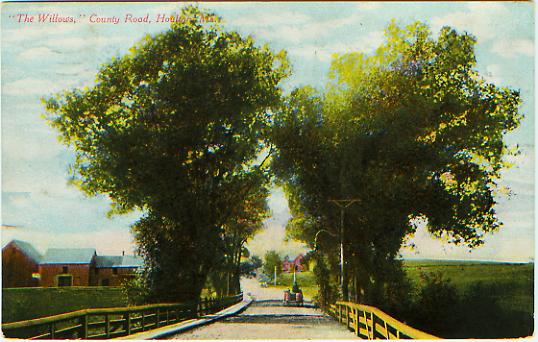
“The Willows,” Country Road, Houlton, Me. (c. 1910)
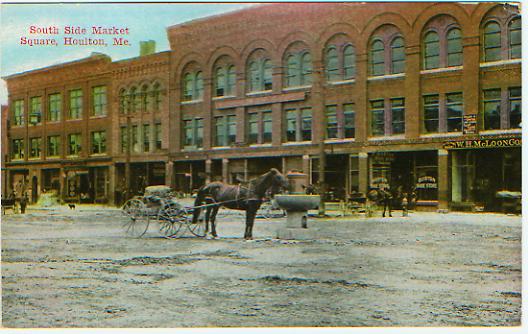
South Side Market Square, Houlton, Me. (c.1905)
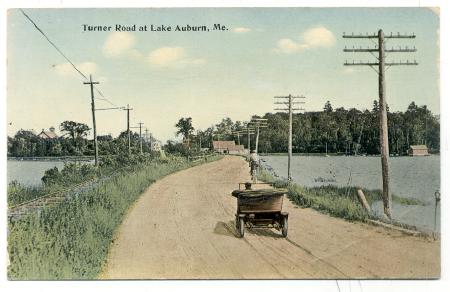
Turner Road at Lake Auburn, Me. (c.1910)
Market produce from away:

Fruit Stand Union Station Portland Me. (c.1905)
